You’ll get the most reliable Bluetooth performance from the Apple Watch Ultra 2 with its Bluetooth 5.3 technology and 240-meter range, or the Google Pixel Watch 3 offering 300-meter connectivity with multi-point pairing. The Garmin Venu 3/3S delivers rock-solid athletic performance with dual Bluetooth/ANT+ connectivity, while Samsung’s Galaxy Watch 7 provides seamless Android integration. For budget-conscious buyers, the Amazfit Balance offers dependable connections with exceptional 14-day battery life. Several optimization techniques can further enhance your smartwatch’s connection strength and reliability.
Apple Watch Ultra 2: Premium Bluetooth Performance With Extended Range
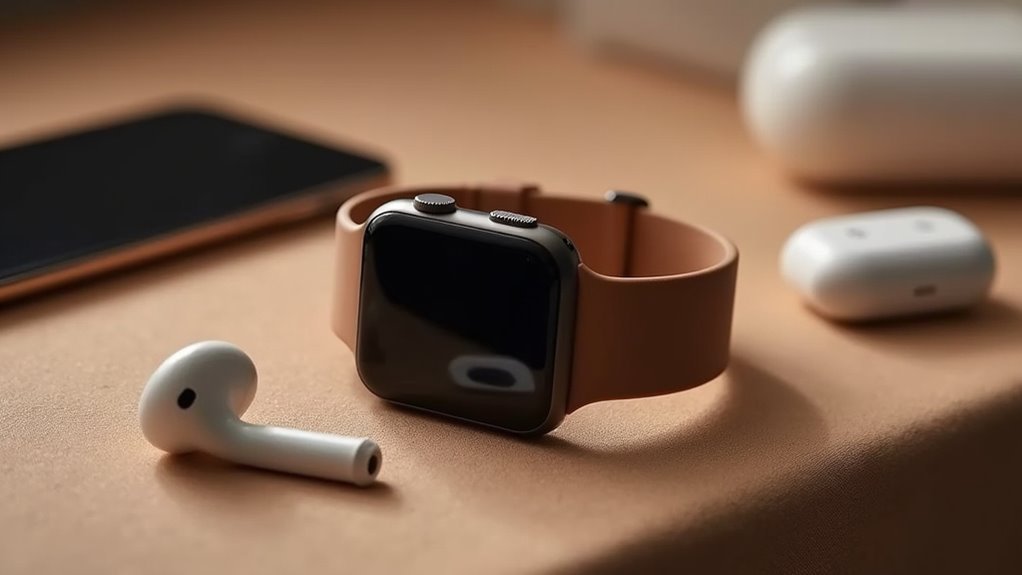
When you’re seeking premium Bluetooth performance in a smartwatch, the Apple Watch Ultra 2 stands out with its cutting-edge Bluetooth 5.3 technology and exceptional range capabilities.
You’ll experience improved speed, lower power consumption, and enhanced interference mitigation compared to earlier versions. The watch maintains strong connectivity up to 240 meters in open space, making it ideal for outdoor activities and sports.
The S9 SiP with its dual-core processor and W3 wireless chip optimizes your Bluetooth connections while minimizing latency.
The S9 SiP’s dual-core processor and W3 wireless chip deliver optimized Bluetooth performance with minimal latency for seamless connectivity.
You’ll enjoy up to 36 hours of battery life even with active Bluetooth usage. The titanium case enhances signal robustness through optimized antenna placement, while water resistance to 40 meters guarantees uninterrupted connectivity during aquatic activities. The device also includes a second-generation Ultra Wideband chip that further enhances connectivity and precision tracking capabilities.
Garmin Venu 3/3S: Superior Connection Stability for Athletic Performance
While the Garmin Venu 3/3S doesn’t match the Apple Watch Ultra 2’s impressive range capabilities, it compensates with rock-solid connection stability that’s specifically engineered for athletic performance. You’ll benefit from dual connectivity options through both Bluetooth and ANT+ technology, allowing seamless pairing with fitness sensors and equipment during workouts.
| Feature | Venu 3 | Venu 3S |
|---|---|---|
| Battery Life | Up to 14 days | Up to 10 days |
| Bluetooth Range | Under 30 feet | Under 30 feet |
| Connection Type | Bluetooth + ANT+ | Bluetooth + ANT+ |
| Signal Monitoring | Real-time strength | Real-time strength |
You can monitor Bluetooth signal strength directly on your watch, helping troubleshoot connectivity issues instantly. The built-in GPS, GNSS, and music playback features guarantee you’ll maintain performance tracking even when your phone’s out of range. However, be aware that users may experience frequent disconnections when moving between different rooms in your home or office.
Google Pixel Watch 3: Enhanced Bluetooth Technology With Reliable Pairing
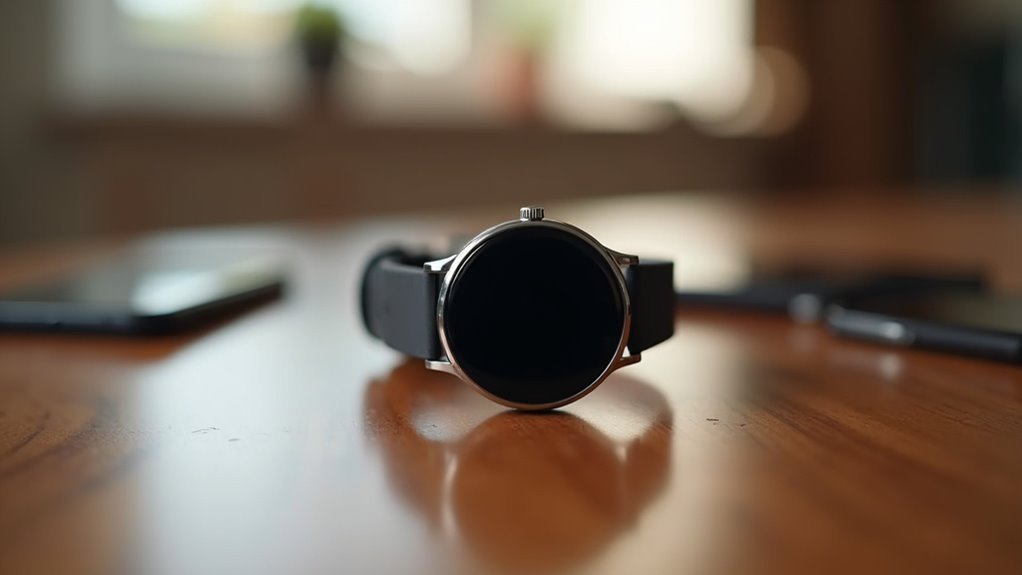
Google’s Pixel Watch 3 leverages cutting-edge Bluetooth 5.3 technology to deliver exceptional connection reliability and expanded range capabilities that outperform many competitors in the smartwatch market.
You’ll experience faster device discovery and seamless pairing with Android smartphones through the dedicated Google Pixel Watch app. The enhanced data rate guarantees low-latency audio during workouts and crystal-clear hands-free calling.
You can connect to multiple devices simultaneously with multi-point pairing, while the improved antenna design reduces signal interference. Despite these advanced Bluetooth features, some users report constant freezing issues that may affect overall connectivity performance.
The watch maintains strong connections up to 300 meters in open spaces, making it ideal for outdoor activities. You’ll need Android 10.0 or newer and a Google Account for full activation, but the streamlined setup process makes getting started effortless.
Samsung Galaxy Watch 7: Seamless Android Integration and Connection Quality
Samsung’s Galaxy Watch 7 sets a new standard for Android smartwatch connectivity with its Bluetooth 5.3 technology and the debut of Wear OS 5, delivering unmatched integration that makes your Android device feel like a natural extension of your wrist.
You’ll experience enhanced reliability and stable connections even in challenging environments, thanks to the improved Bluetooth technology. The watch maintains consistent connectivity whether you’re maneuvering through crowded areas or moving between different spaces.
With optional LTE support, you can operate independently without your phone nearby.
The LTE-enabled Galaxy Watch 7 transforms into a standalone device, freeing you from phone dependency while maintaining full functionality.
The seamless Android integration extends beyond basic notifications. You’ll access a wide range of Android apps directly on your watch, while dual-band GPS guarantees precise location tracking in urban environments. The powerful Exynos W1000 processor ensures smooth performance and delivers 2.7x faster app loading compared to the previous generation.
NFC support enables quick transactions and data transfers, making daily tasks effortless.
Amazfit Balance: Budget-Friendly Option With Solid Bluetooth Reliability
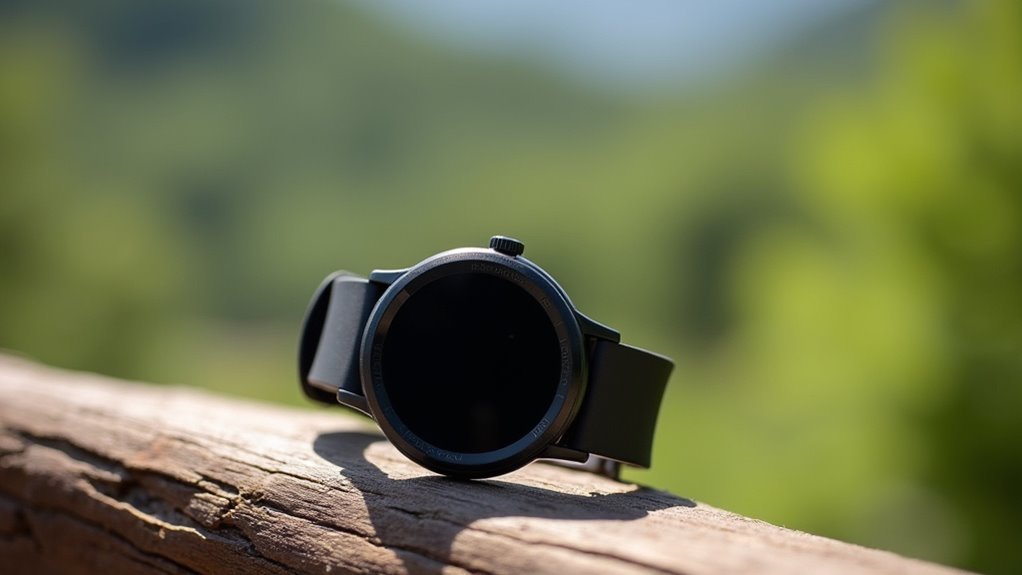
The Amazfit Balance proves you don’t need to spend premium prices to get reliable Bluetooth connectivity and extensive smartwatch features.
You’ll enjoy stable Bluetooth calling and messaging capabilities alongside voice control functionality that keeps you connected throughout your day.
This budget-friendly smartwatch delivers impressive value with:
- 14-day battery life under typical usage, minimizing charging frequency
- 1.51″ HD AMOLED display providing vibrant visuals and excellent screen clarity
- Dual-band GPS tracking with offline maps for accurate outdoor navigation
- 150+ downloadable apps expanding functionality beyond basic smartwatch features
You’ll appreciate the durable construction featuring stainless steel, Gorilla Glass protection, and PVC coating.
The device seamlessly connects to various workout devices via Bluetooth and syncs your activity data to popular fitness apps like Strava and Google Fit.
While some users report occasional connectivity hiccups, the Amazfit Balance offers solid Bluetooth reliability at an accessible price point.
Key Factors That Impact Smartwatch Bluetooth Connection Strength
While smartwatch manufacturers tout impressive connectivity features, several technical factors determine whether you’ll experience rock-solid Bluetooth performance or frustrating dropouts.
Transmit power greatly affects your connection range – devices supporting higher power levels extend beyond the typical 30-foot range, though this drains battery faster. Your smartwatch’s receiver sensitivity determines how well it detects weak signals, with modern devices achieving -70 dBm to -82 dBm sensitivity for better reliability.
The physical layer defines how data transmits between devices, while the 2.4 GHz radio spectrum handles interference from other electronics. Different materials in your environment create varying attenuation levels, with concrete and metal structures causing more significant signal degradation than wood.
However, antenna design and environmental factors often matter most. Your watch’s antenna placement, nearby obstacles, and interference sources frequently impact connection strength more than the device’s technical specifications alone.
Optimizing Your Smartwatch Bluetooth Range and Performance
You can greatly boost your smartwatch’s Bluetooth performance through strategic placement and smart positioning techniques.
Reducing interference from competing wireless signals and physical obstacles will strengthen your connection reliability.
Keeping your smartwatch software updated guarantees you’re getting the latest Bluetooth optimizations and range improvements.
Maintaining line-of-sight between your smartwatch and connected device significantly enhances signal propagation and transmission range.
Placement and Positioning Tips
Since your smartwatch’s Bluetooth performance depends heavily on strategic placement, understanding ideal positioning techniques can dramatically improve your connection stability and range.
You’ll want to keep your watch and paired device within close proximity while maintaining clear line-of-sight whenever possible.
Here are four essential placement strategies:
- Elevate your devices above flat surfaces to reduce signal absorption
- Avoid metal objects that can reflect or absorb Bluetooth signals
- Stay away from water sources since water naturally absorbs radio frequencies
- Position devices centrally in your usage area for maximum coverage
Don’t cluster multiple Bluetooth devices together, as this increases interference.
Instead, focus on antenna orientation and consider corner placement to minimize wall interference while maximizing your smartwatch’s connection reliability. Remember that your body can significantly impact antenna performance, so maintain at least 8mm clearance between the watch and other objects when possible for optimal signal transmission.
Interference Reduction Strategies
Multiple interference sources can sabotage your smartwatch’s Bluetooth performance, but implementing targeted reduction strategies will restore reliable connectivity. You’ll need to manage frequency bands strategically and adjust power levels to minimize conflicts with other wireless devices.
| Strategy | Implementation | Benefit |
|---|---|---|
| Physical Barriers | Use shielding materials | Blocks external interference |
| Frequency Management | Avoid Wi-Fi channel overlap | Reduces signal conflicts |
| AFH Technology | Enable adaptive hopping | Dynamically avoids noisy channels |
| Power Control | Adjust device output levels | Minimizes cross-device interference |
Position your Wi-Fi router away from Bluetooth devices and change channels when necessary. Your smartwatch’s adaptive frequency hopping automatically switches between 79 available channels, avoiding interference. Consider appliance placement carefully—microwaves and wireless speakers create significant disruption within the 2.4GHz band.
Maintaining reasonable distances between your smartwatch and other Bluetooth devices prevents signal conflicts and ensures optimal connectivity performance.
Software Update Benefits
While hardware limitations often get blamed for Bluetooth connectivity issues, software updates frequently deliver the most significant improvements to your smartwatch’s wireless performance.
You’ll notice enhanced responsiveness and fewer connection dropouts after installing updates. These patches address security vulnerabilities while optimizing battery efficiency and system operations.
To maximize your update benefits:
- Connect to Wi-Fi before checking for updates in Settings
- Keep your smartwatch plugged in during the installation process
- Restart your device after updates complete to guarantee changes take effect
- Enable automatic updates to receive critical patches immediately
Regular updates enhance compatibility with your smartphone, improve Bluetooth range optimization, and reduce interoperability errors. Most manufacturers provide companion apps that streamline the update process and ensure stable data connection during firmware installation.
You’re fundamentally getting a better-performing device through consistent software maintenance.
Frequently Asked Questions
Can Smartwatches Maintain Bluetooth Connection Through Walls and Multi-Story Buildings?
You can maintain smartwatch Bluetooth connections through plaster and wooden walls at roughly 10 meters, but concrete and metal walls drastically reduce range to 2 meters or completely block signals between floors.
Do Smartwatch Bluetooth Connections Drain Phone Battery Faster Than Other Devices?
Smartwatches don’t drain your phone’s battery faster than other devices. They use efficient Bluetooth Low Energy, consuming only 1-3% daily versus classic Bluetooth devices like headphones that use 5-8% of your battery.
Which Smartwatches Work Best With Hearing Aids That Use Bluetooth?
You’ll find Apple Watch and Samsung Watch work exceptionally well with Bluetooth hearing aids like Phonak and ReSound. They support direct audio streaming, hands-free calling, and dedicated hearing aid apps for seamless integration.
Can Multiple Smartwatches Connect to One Phone Simultaneously via Bluetooth?
You can’t connect multiple smartwatches to one phone simultaneously via Bluetooth. Most smartphones and smartwatches don’t support this functionality due to manufacturer limitations, even though Bluetooth technology technically allows multiple connections.
Do Smartwatch Bluetooth Connections Interfere With Car Audio or Other Devices?
Yes, your smartwatch can interfere with car audio, causing distorted sound or connectivity issues. You’ll experience fewer problems by keeping devices updated, minimizing connected devices, or putting your watch in airplane mode.
In Summary
You’ll find these seven smartwatches deliver the rock-solid Bluetooth performance you’re seeking. Whether you’re choosing the premium Apple Watch Ultra 2 or the budget-friendly Amazfit Balance, you’re getting reliable connectivity that won’t let you down. Remember to take into account your specific needs, budget, and device ecosystem when making your decision. Don’t forget to optimize your settings and maintain proper range for the best possible Bluetooth experience with your new smartwatch.

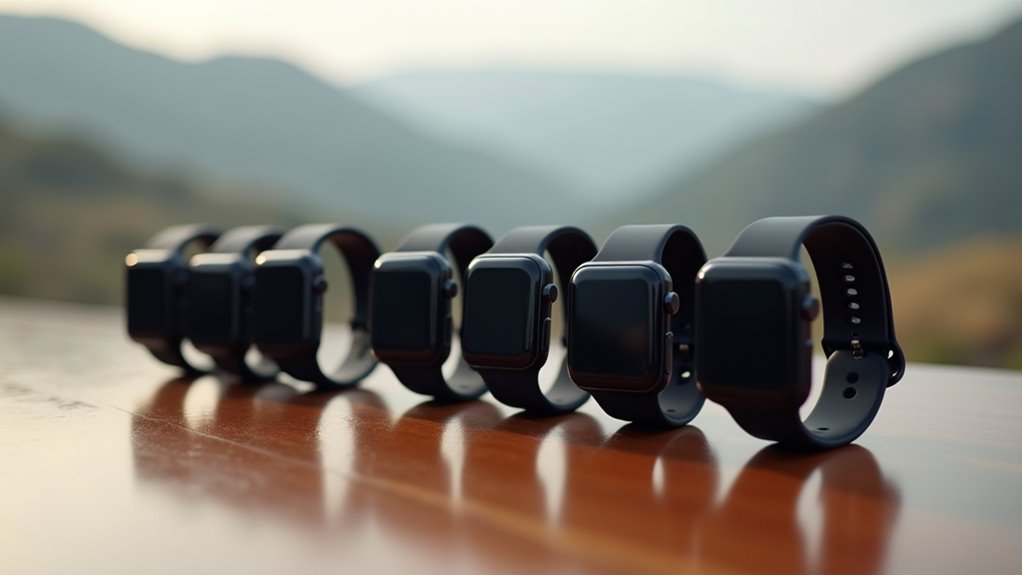

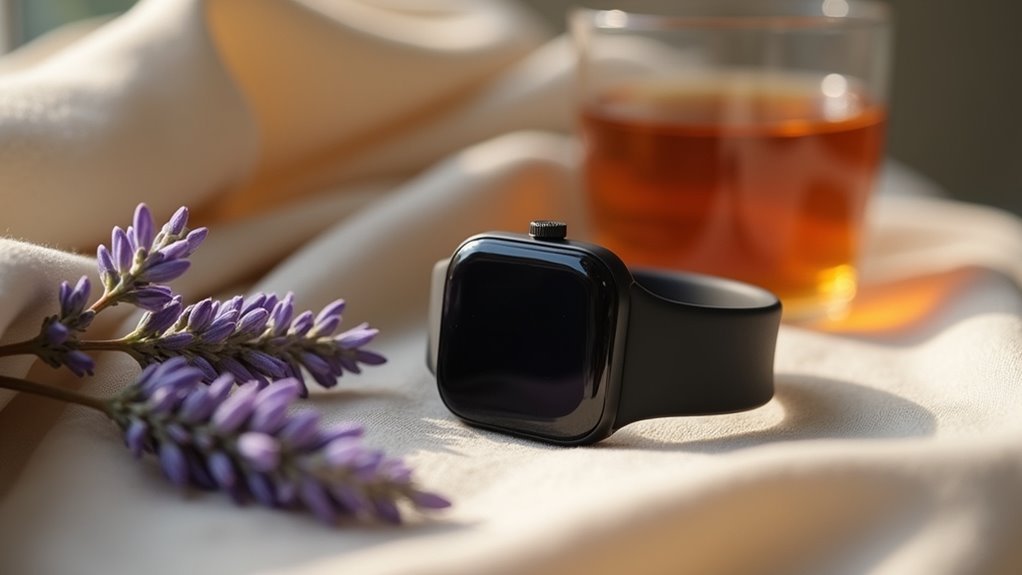
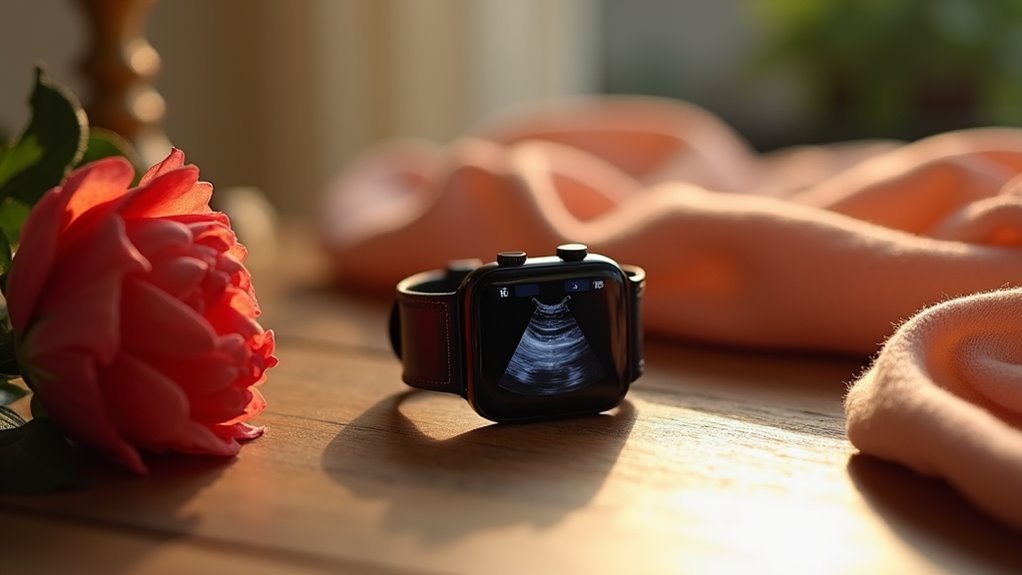
Leave a Reply